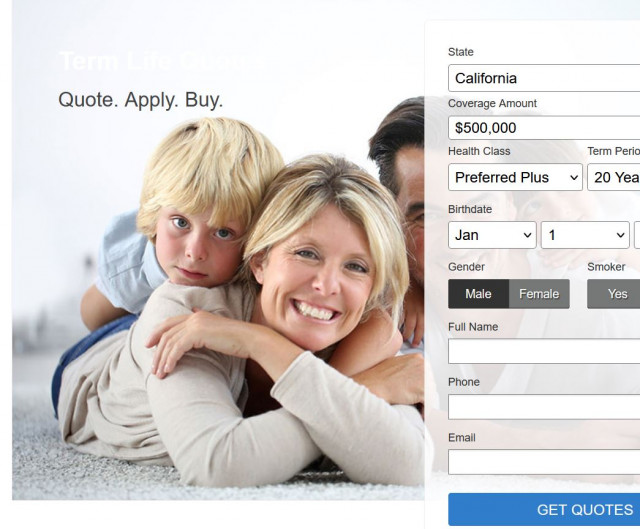Quick Quote for Life Insurance
Types of life insurance explained
There are two primary categories of life insurance: term and permanent. Term life insurance has a set timeframe (usually 10 to 30 years), making it a more affordable option. Permanent life insurance differs in that it lasts your entire lifetime. There are multiple types of permanent life insurance, including whole life, and universal life. There's also a specific type of whole life insurance called final expense or burial insurance that's meant to cover end-of-life expenses.
Term life insurance
Term life insurance is generally more affordable than permanent life insurance options. It provides coverage for a set number of years, paying out as long as your policy hasn't expired and you've paid the premiums. You can lock in your rate for the entire term period, which makes budgeting and planning easier.
Term policies generally cost less than permanent policies because they're only in place for a limited time. At the end of the term period, and based on the product options available, you may be able to renew your policy at an adjusted rate. However, you can typically only renew a term life policy on a year-to-year basis — not for another term period. Your new rate will be based on your age and health at the time of renewal, and you may or may not need a medical exam to obtain coverage.
Whole life insurance (permanent)
As a type of permanent life insurance, whole life insurance provides coverage for your entire lifetime, paying your benefit no matter when you pass away — as long as you keep paying your bill. Whole life insurance also includes a savings component that a portion of your premium will pay into. The savings component has a fixed interest rate that builds cash value over time, which is part of the reason whole life policies typically cost more than term life policies with similar coverage.
The cash value of your whole life policy does not affect the death benefit paid out upon your passing. However, if the cash value grows to equal your death benefit amount by the time you're a set age (usually 100 or 120), your insurer will terminate your policy and pay out the coverage amount.
If you're not banking on living to 100, your cash value offers another benefit. You can choose to withdraw a portion of funds as a loan, based on your policy's cash value. There's typically no credit check required and a minimal loan approval process since you're essentially borrowing money from yourself. You can pay back the loan with interest, or if you pass away before returning the funds, the remaining loan amount and interest will be withdrawn from the payout to your beneficiaries.
Universal life insurance (permanent)
Universal life insurance is another permanent life insurance option, so it provides coverage for your entire life as long as the premiums are paid. It's sometimes called adjustable life insurance because it offers more flexibility than a whole life policy. For example, universal life policies allow you to increase or decrease your death benefit and even adjust or skip your monthly premium (within certain limits).
As with whole life, a universal policy has a cash value component that grows and allows for borrowing. However, a universal policy's cash value works differently than a whole policy's in two key ways:
- The interest rate for a universal policy's cash value is not fixed. You will have a guaranteed minimum interest rate, but in general, the rate at which your cash value builds can change over time based on market conditions.
- Your universal policy's cash value can eventually grow and result in a zero-cost policy, in which all premiums are paid from the cash value you've built.
